Work has started to modernise the Guyana Zoological Park, which currently functions as a shelter for injured animals or a holding facility at best, but securing funding for the transformation remains crucial.
The park has been in a prolonged state of depression but its resuscitation is one of the pillars of the Three Parks Initiative, which is a collaboration between the Ministry of Natural Resources and the Environment (MNRE) and the Protected Areas Com-mission (PAC). With the help of a Seattle-based firm that specializes in zoo design, PJA Architects & Landscape Architects, a Guyana Zoological Park Master Plan has been drafted and this envisages the revolutionising of the zoo experience by removing the cages and creating nature-oriented mini-eco-systems in their place. The plan is also intended to increase visits and generate revenue, which will in turn contribute to the modernisation of the entire zoo.
According to the Pro-tected Areas Officer Annalise Bayney, who is also the Officer-in-Charge of the Three Parks Initiative, the zoo in its present state is not a zoo. She said that the zoo currently functions as a shelter for injured animals or a holding facility at best. She related that the animals in the zoo were not captured for the purpose of being there, but were either donated or left at the doorstep of the facility. She said that the injured animals treated by the zoo are often released into the wild, because the zoo administration understands that its current facilities are outdated and inadequate.
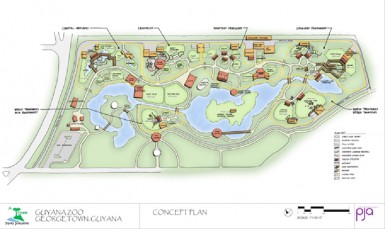
The presence of macaws in the trees at the zoo is an example of animals that the zoo would have nurtured back to health. She explained that the facilities the zoo now houses were built in the 1950s before there were any sort of guidelines to be followed for zoo husbandry.
She stated that at this point in time, the zoo does not in fact conform to the international standards of minimum enclosure size.
Bayney does, however, believe that in five years time and with secured funding, the master plan will be implemented and the current dilapidated zoo will instead provide visitors with a natural world existing within the city limits.
“The new vision for the zoo unveiled to the Guyanese public will feature the four major eco-systems in Guyana – Coastal Wetlands, Savannah, Mountain Highlands and Lowland Rainforests,” the plan states. It proposes certain main attractions for the eco-systems; the Coastal Wetlands would feature the Black Caiman, while the Savannah’s main exhibit would be the Giant River Otter and the Mountain Highlands would feature the Jaguar. Also, the Rainforest eco-system will be the home to the Harpy Eagle, while a fifth exhibit—World Treasures—would boast international animals obtained through zoo exchange programmes.
The plan aims to reinvent the Guyanese zoo experience by creating exhibits which allow animals to be viewed in areas resembling their natural habitats.
According to the concept plan, the zoo will be extended to what is known as the service road and this extension will provide large enclosures for the international animal exhibit. In addition, the islands within the compound would feature raised platforms and bridges for exhibits such as ‘Monkey Island,’ which will allow visitors to see the animals at eye level in their natural habitat.
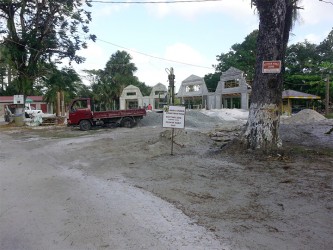
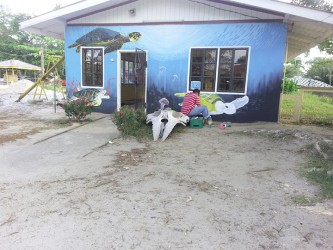
The zoo would also be extended further east, the section which is usually barricaded, to feature the zoo’s priority exhibit: an aviary.
Bayney explained that this aviary will attempt to replicate the life of the birds in the forest by using a bio-mesh to contain the animals as opposed to cages. She stated that while it will be one of the larger exhibits, it will require the least amount of infrastructural changes, and as such will be completed first.
Bayney also spoke about the proposed improvement of the current nature school as well as the inclusion of a petting zoo, which is already under construction and should be completed within a few months.
For all of this to be accomplished, Bayney explained that many of the present structures have to be demolished and rebuilt. She asserted that while there are a few enclosures which can be rehabilitated, it is not possible to do so for most.
She also maintained that all of the new structures will have to be raised at least three feet off the ground to prevent flooding. She stated that the estimated project budget is US$14 million. And while the government has contributed to recap the zoo entrance and repaint the murals, there is still a lot more to be done. According to Bayney this funding will have to be sourced from the private sector and she noted that the administration has already engaged a few companies. She stated that the Beharry Group of Companies has been very responsive to the initiative, while noting that it funded the concept plan.
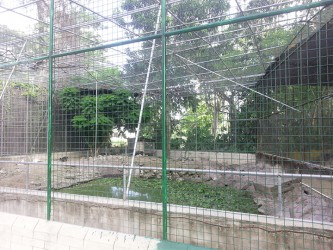
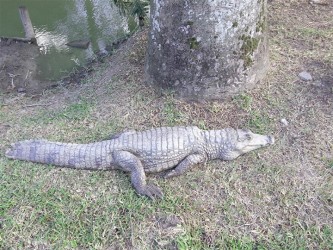
When questioned about the current upkeep of the zoo or lack thereof, Bayney stated that with the limited facilities and resources, the zoo is doing the best that it possibly can. She said that it is important to remember that the structures are inadequate and the animals are either old or unhealthy.
Bayney related that there is in fact an animal currently residing in the zoo which has been there since the opening of the facility in 1952—the Harpy Eagle, which is, to date, the oldest living eagle of its kind in captivity.
She noted that the concept plan also includes new veterinary facilities and proposes to implement new water filtration systems, which will help to keep the water in enclosures as clean as possible. This will be a change from the usually green and stagnant water found in the cages.
The Zoological Park, which was established in 1952, is the only recognized facility in the country which houses animals for the purpose of zoo husbandry. According to statics provided by the administration, the park, which is centrally located in the city, “is visited by an average of over 120,000 Guy-anese and international tourists every year.”




